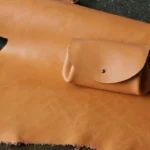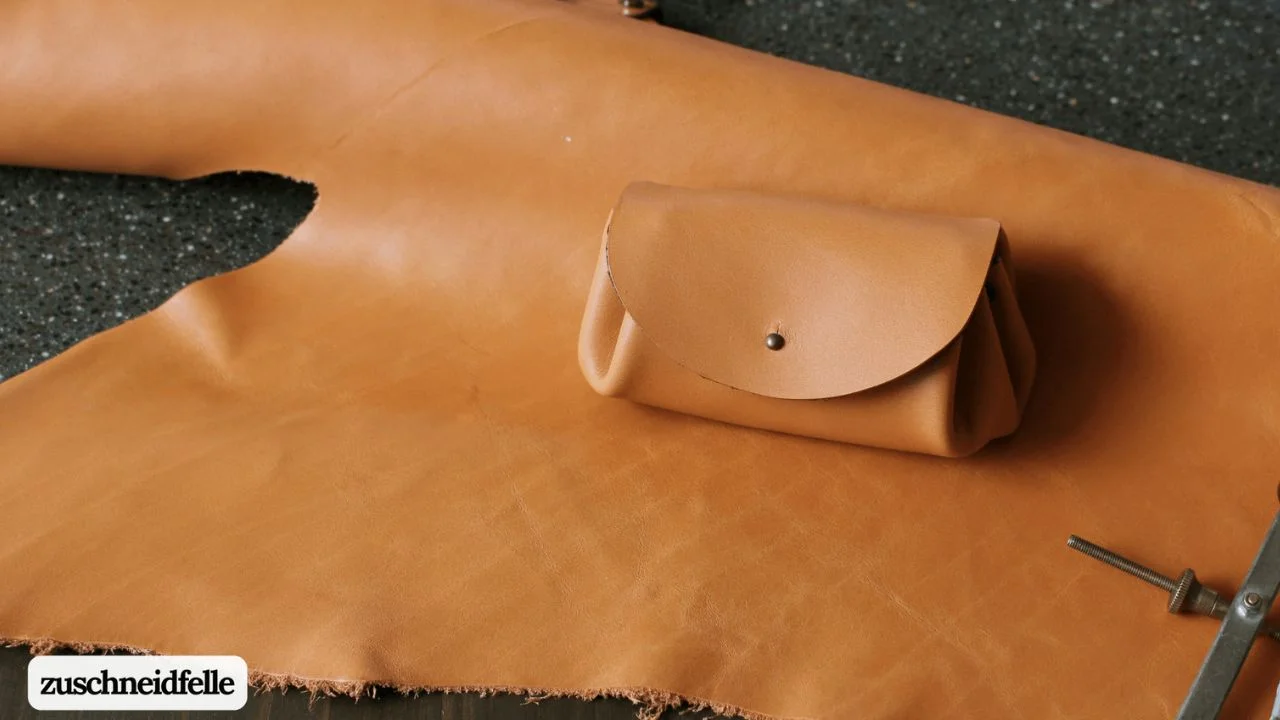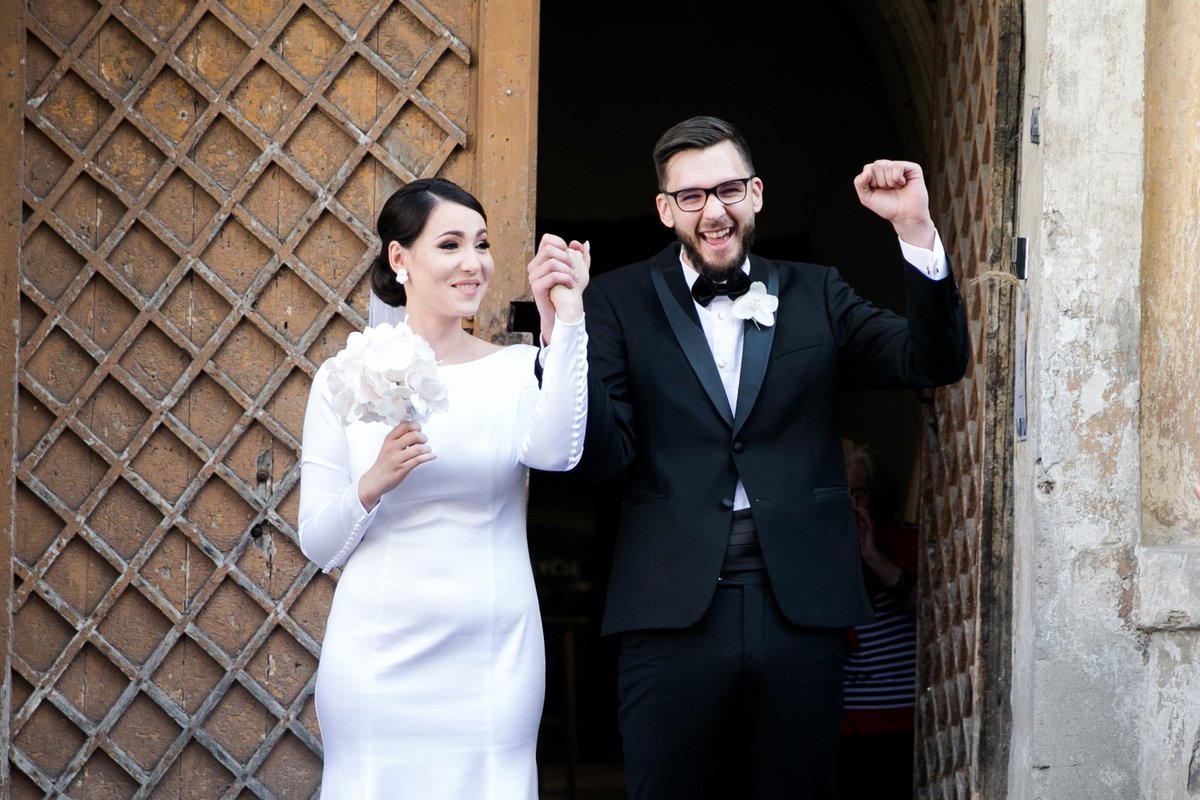In the world of leathercraft, the term Zuschneidfelle holds particular importance for artisans and leather workers. Derived from the German language, Zuschneidfelle translates directly to “cutting hides” or “cutting leather hides.” It refers to a specific type of leather that is purchased primarily for the purpose of being cut into various shapes and sizes for use in the production of leather goods. This article explores what Zuschneidfelle are, their characteristics, and their significance in the field of leatherworking, particularly focusing on their use in high-quality craftsmanship.
What is a Zuschneidfelle?
A Zuschneidfelle is a specific category of leather hide, often of a particular grade or quality, that is used as raw material in leather manufacturing. The hide itself comes from various animals, but the most commonly used are cattle, pigs, and goats. These hides are not tanned into finished leather products such as garments or upholstery. Instead, they are left in a semi-raw or semi-finished state, so that they can be further processed—cut into specific shapes or sizes, dyed, embossed, or treated based on the artisan’s needs.
The key distinguishing factor of a Zuschneidfell lies in its intended use. It is mainly sold for cutting into various components that will be part of a larger finished product, such as wallets, belts, bags, or shoes. This type of leather is typically chosen for its durability, grain quality, and flexibility, all essential features for crafting high-quality goods.
Characteristics of Zuschneidfelle
The characteristics of a Zuschneidfelle are closely related to the type of leather from which it is made. Below are some of the key features that define Zuschneidfelle:
- Thickness:
The thickness of the leather plays an important role in determining how it will be used. Leather used for Zuschneidfelle is usually medium to thick in consistency—often between 1.0 mm and 2.0 mm. This range provides the leather with the necessary durability and strength for cutting into components that need to endure frequent use, such as straps, belts, or shoe soles. - Grain Quality:
Leather with a fine grain is more valuable because it is aesthetically pleasing and durable. Zuschneidfelle is typically selected for its consistent grain pattern, free from defects like scars or stretch marks. The grain can also affect how the leather behaves when it is worked on, including how it absorbs dye, shapes, and ages over time. - Flexibility:
While Zuschneidfelle needs to be durable, it must also possess some degree of flexibility to allow for easy cutting and shaping. The flexibility depends on the tanning process, the species of animal the hide comes from, and the way it is conditioned. - Tanning Process:
The hides are often vegetable-tanned or chrome-tanned. Vegetable tanning gives the leather a more organic look, which may be preferred for natural products like shoes or bags. Chrome tanning, on the other hand, allows for a softer, more flexible leather suitable for items that need to withstand rigorous use, like belts or work gloves. - Appearance:
Unlike finished leather, Zuschneidfelle may still show imperfections or marks on the surface. These blemishes are often smoothed out or minimized during the crafting process. Leatherworkers may choose specific areas of the hide based on the aesthetic properties they desire.
How Zuschneidfelle is Used in Leatherworking
Once a Zuschneidfelle is purchased, it enters the leatherworking process, where it undergoes several steps to become a finished leather product. The first step is to cut or schneiden the leather, which is the literal translation of the term. Leatherworkers usually lay out patterns on the hide to maximize the material’s usage and minimize waste. The cutting is often done by hand using rotary cutters or by machine using industrial cutting presses.
After cutting, the leather may undergo several treatments, such as:
- Dyeing: Leatherworkers can dye the pieces in different colors to suit the design of the final product. The dye will penetrate the leather, adding vibrancy while retaining the natural texture of the hide.
- Burnishing: The edges of each cut piece are typically burnished to ensure they are smooth and free from roughness. This adds a polished, professional touch to the final product.
- Embossing: Patterns, logos, or decorative designs may be stamped or embossed onto the leather.
- Stitching or Binding: The cut pieces of leather are stitched together by hand or machine, depending on the complexity of the design. High-quality stitching adds both aesthetic appeal and durability.
One of the most important factors for craftsmen is how well the Zuschneidfelle performs during these steps. Leatherworkers prefer hides that are flexible but not overly soft, resilient but not too rigid, and, above all, consistent in color and texture.
The Role of Zuschneidfelle in the Craftsmanship
The use of Zuschneidfelle is integral to the process of creating custom leather goods. It provides artisans with the raw material they need to create one-of-a-kind products. However, the quality of the final product depends heavily on the quality of the Zuschneidfelle, as well as how the leather is cut, treated, and assembled.
Artisans who specialize in leather goods often select their Zuschneidfelle based on the specific needs of their projects. For example, a leatherworker creating luxury handbags may choose a particularly smooth and soft Zuschneidfelle to give the finished product a refined appearance. On the other hand, someone making heavy-duty boots or work gear might opt for a thicker, more robust hide that can withstand wear and tear.
The customizability of leather, especially with Zuschneidfelle, allows for the creation of a wide range of products that are both functional and aesthetically pleasing. Whether it’s a sleek wallet, a handcrafted belt, or a rugged pair of boots, Zuschneidfelle serves as the foundation for products that last for years, developing a rich patina and unique character over time.
Sustainable Practices in Zuschneidfelle Usage
As with most areas of the leather industry, the ethical sourcing and sustainability of Zuschneidfelle have become major concerns in recent years. Many leatherworkers are now more aware of the environmental impact of the leather industry and are seeking more sustainable alternatives. Sustainable leather production involves sourcing hides from responsible farms, using natural or less toxic tanning processes, and reducing waste by maximizing the use of every piece of leather.
One growing trend is the use of vegetable-tanned leather, which avoids the harmful chemicals involved in chrome tanning. Additionally, many leatherworkers are beginning to work with smaller, local tanneries that focus on more sustainable and ethical practices. These efforts are helping to ensure that the use of Zuschneidfelle in leatherworking aligns with modern sustainability goals.
Conclusion
In conclusion, Zuschneidfelle plays an essential role in the craft of leatherworking, serving as the raw material for creating custom, durable, and aesthetically pleasing leather goods. Its qualities—such as thickness, grain, and flexibility—make it ideal for cutting into components that can later be transformed into high-end, functional products. Whether for luxury fashion items or rugged work gear, Zuschneidfelle remains a staple of the leathercraft industry. As demand for sustainable products rises, artisans continue to innovate and adapt, ensuring that the process of using Zuschneidfelle remains both creative and conscientious.
As the leathercraft industry evolves, the importance of understanding materials like Zuschneidfelle grows. By learning more about its characteristics, sourcing methods, and applications, artisans and consumers alike can appreciate the art of leatherworking and its ongoing contributions to both tradition and innovation.











